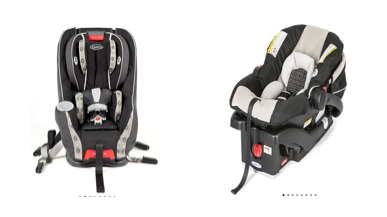Consumer Reports' recent crash test comparison on car seat safety resulted in a new recommendation that will have parents running to the store to purchase a new piece of equipment sooner than they may have thought.
The recommendation has to do with when to move a child from an infant car seat to a convertible car seat. One way to tell the two safety seats apart is that an infant car seat easily snaps into and out of the car seat base and, once out, can be used as a carrier, while the bulkier convertible car seat stays put once installed.
What you'll need when you bring baby home from the hospital
Most car seat manufacturers' rules state the child must be out of the infant car seat (with the convenient carrier aspect) by the time they reach one of the limits, either height or weight, or both.
For some brands, the weight limit is as high as 40 pounds, and the height limit usually maxes out at 30 inches, the latter of which most kids will outgrow first, usually around 15 months.
Consumer Reports is now saying you might not want to wait that long. Instead, they recommend moving children into the convertible seat by age 1 to be safe.
Consumer Reports is now saying you might not want to wait that long. Instead, they recommend moving children into the convertible seat by age 1 to be safe.
This conclusion is based on safety reviews of several brands of both infant and convertible car seats using crash dummies, which found that babies were more likely to hit their heads on the back of the front seat while sitting in an infant car seat vs. a convertible car seat.
"The dummy's head hit the simulated seatback in 16 of the 30 [infant] seats we tested. But with rear-facing convertible seats, the same dummy avoided contact in 22 of the 23 models," reveals Consumer Reports.
This recommendation does not change the fact that children are recommended to sit in rear-facing car seats until age 2.


